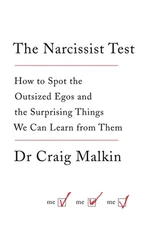This book aims to demonstrate how our new task of consciously managing the planet, by far the most important effort ever undertaken by humankind, can be tackled. The idea for it came to me in a moment of revelation two years ago in Sweden, during a conference in the pretty lakeside village of Tällberg. I was invited to join a group of scientists meeting in closed session to discuss the concept of ‘planetary boundaries’, a term coined by the Swedish director of the Stockholm Resilience Centre, Professor Johan Rockström. The scientists – all world experts in their fields – were trying to nail down which parts of the Earth system were being most affected by humans, and what the implied limits might be to human activities in these areas. Some, like climate change and biodiversity loss, were familiar and obvious contenders for top-level concern. Others, like ocean acidification and the accumulation of environmental toxins, were newer and less well-understood additions to the stable.
During hours of debate, and with much scribbling of numbers and spider diagrams on flip-chart paper, humanity’s innumerable list of ecological challenges was reduced to just nine. I left the room late that afternoon certain that something radical had just happened, but not quite sure what it was. It wasn’t until later in the evening – in the shower of all places – that I understood in a flash just how important the planetary boundaries concept could be. I realised that scientists studying the Earth system were now in a position to define what mattered at a planetary level, and that this knowledge could and should be the organising basis for a new kind of environmental movement – one that left behind some of the outdated concerns of the past to focus instead on protecting the planet in the ways that really counted. Of course all knowledge is tentative, but here was something very tangible: for the first time, world experts were not just listing our problems, but putting numbers on how we should approach and solve them. I tracked down Johan Rockström and we shared a beer in the hotel lobby. He was encouraging, and we agreed that my job as a writer and as an environmentalist should be to do what the scientists could not: get this scientific knowledge out into the mainstream and demand that people – campaigners, governments, everyone – act on it. Hence this book.
The planetary boundaries concept of course builds on past work conducted by experts in many different fields, from geochemistry to marine biology. But its global approach is actually very new and potentially quite revolutionary. Unlike, say, the 1972 Limits to Growth report produced by the Club of Rome, the planetary boundaries concept does not necessarily imply any limit to human economic growth or productivity. Instead, it seeks to identify a safe space in the planetary system within which humans can operate and flourish indefinitely in whatever way they choose. Certainly this will require limiting our disturbance to key Earth-system processes – from the carbon cycle to the circulation of fresh water – but in my view this need constrain neither humanity’s potential nor its ambition. Nor does it necessarily mean ditching capitalism, the profit principle, or the market, as many of today’s campaigners demand. Above all, this is no time for pessimism: we have some very powerful tools available to allow us to live more gently on this planet, if only we choose to use them.
In this book I take the planetary boundaries concept further into the social, economic and political realms than the original experts were able to. Although some of the planetary boundaries expert group have generously helped to check my facts and figures, I do not expect them to agree with all my suggestions or arguments regarding the implications of meeting the boundaries. There are substantial caveats and uncertainties, as always, and disagreement can be expected between other experts about whether a ‘planetary boundary’ is truly relevant, and if so, what its limit should be – not to mention how we should meet it. This is first-draft work, Planetary Boundaries 1.0 if you will; there cannot fail to be teething problems. Even so, factual statements in this book are based wherever possible on the peer-reviewed scientific literature – the gold standard for current knowledge. References are at the back, and I urge all readers to make good use of them.
Many will find my analysis and conclusions rather unsettling – not least my colleagues in the Green movement, many of whose current preoccupations are shown to be ecologically wrong. Until now, environmentalism has been mostly about reducing our interference with nature. Central to the standard Green creed is the idea that playing God is dangerous. Hence the reflexive opposition to new technologies from splitting the atom to cloning cattle. My thesis is the reverse: playing God (in the sense of being intelligent designers) at a planetary level is essential if creation is not to be irreparably damaged or even destroyed by humans unwittingly deploying our new-found powers in disastrous ways. At this late stage, false humility is a more urgent danger than hubris. The truth of the Anthropocene is that the Earth is far out of balance, and we must help it regain the stability it needs to function as a self-regulating, highly dynamic and complex system. It cannot do so alone.
This means jettisoning some fairly sacred cows. Nuclear power is, as many Greens are belatedly realising, environmentally almost completely benign. (The Fukushima disaster in Japan did nothing to change this sanguine assessment, and perhaps more than anything reconfirmed it: more on that later.) Properly deployed, nuclear fission is one of the strongest weapons in our armoury against global warming, and by rejecting it in the past campaigners have unwittingly helped release tens of billions of tonnes of carbon dioxide into the atmosphere as planned nuclear plants were replaced by coal from the mid-1970s onwards. Anyone who still marches against nuclear today, as many thousands of people did in Germany following the Fukushima accident, is in my view just as bad for the climate as textbook eco-villains like the big oil companies. (Germany’s over-hasty switch-off of seven of its nuclear power plants after the Japanese tsunami will have led to an additional 8 million tonnes of carbon dioxide in just three months. 3 Конец ознакомительного фрагмента. Текст предоставлен ООО «ЛитРес». Прочитайте эту книгу целиком, купив полную легальную версию на ЛитРес. Безопасно оплатить книгу можно банковской картой Visa, MasterCard, Maestro, со счета мобильного телефона, с платежного терминала, в салоне МТС или Связной, через PayPal, WebMoney, Яндекс.Деньги, QIWI Кошелек, бонусными картами или другим удобным Вам способом.
) The same goes for genetic engineering. The genetic manipulation of plants is a powerful technology that can help humanity limit its environmental impact and feed itself better in the process. I personally campaigned against it in the past, and now realise that this was a well-intentioned but ignorant mistake. The potential of synthetic biology I can only begin to guess at today in early 2011. But the lesson is clear: we cannot afford to foreclose powerful technological options like nuclear, synthetic biology and GE because of Luddite prejudice and ideological inertia.
Indeed, if we apply the metric of the planetary boundaries to the campaigns being run by the big environmental groups, we find that many of them are irrelevant or even counterproductive. Carbon offsetting is a useful short-term palliative that the Green movement has discredited without good reason, harming both the climate and the interests of poor people in the process. Some Green groups have also made it very difficult to use the climate-change negotiations as a way to save the world’s forests by insisting that rainforest protection should not be eligible for carbon credits. In addition, environmental and development NGOs in general have been much too easy on rapidly emerging big carbon emitters like China and India, whose governments need to be pressed or assisted to eschew coal in favour of cleaner alternatives. Blaming the rich countries alone for climate change may tick all the right ideological boxes, but it is far from being the full story.
Читать дальше











